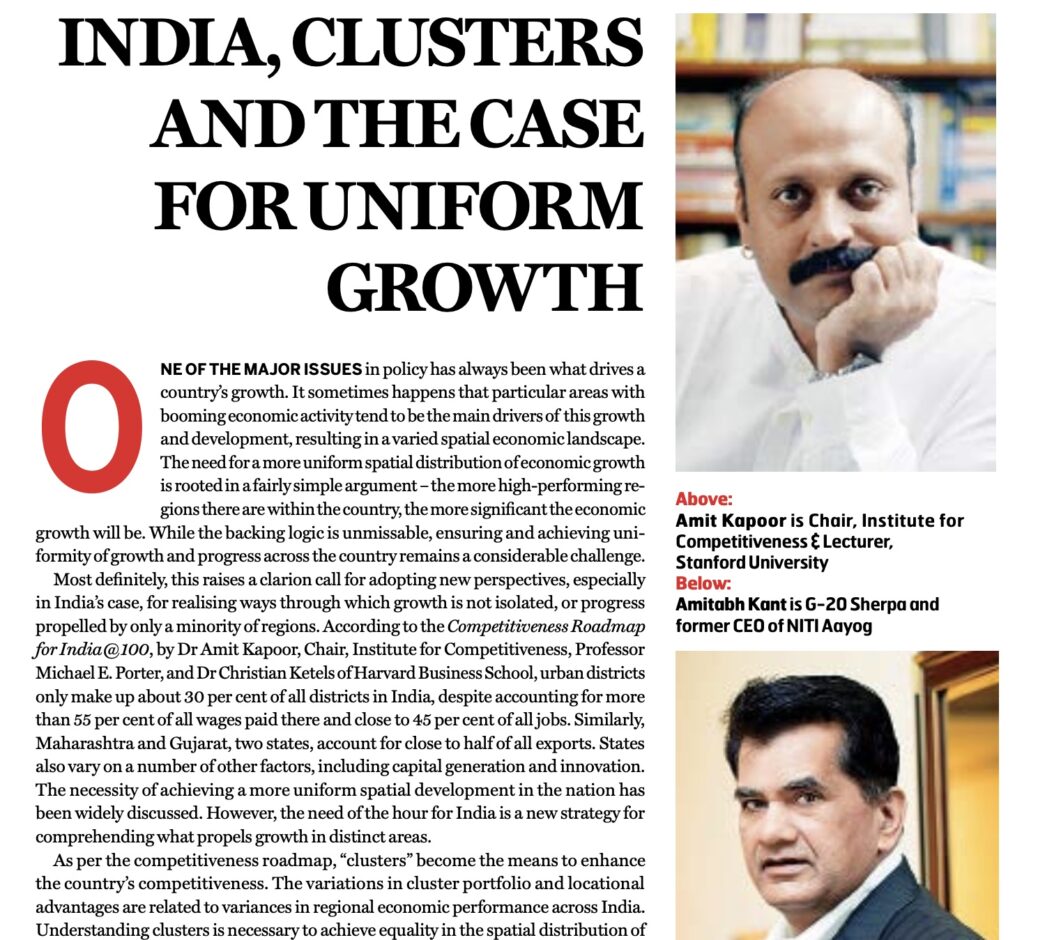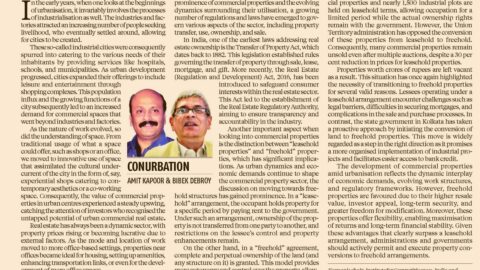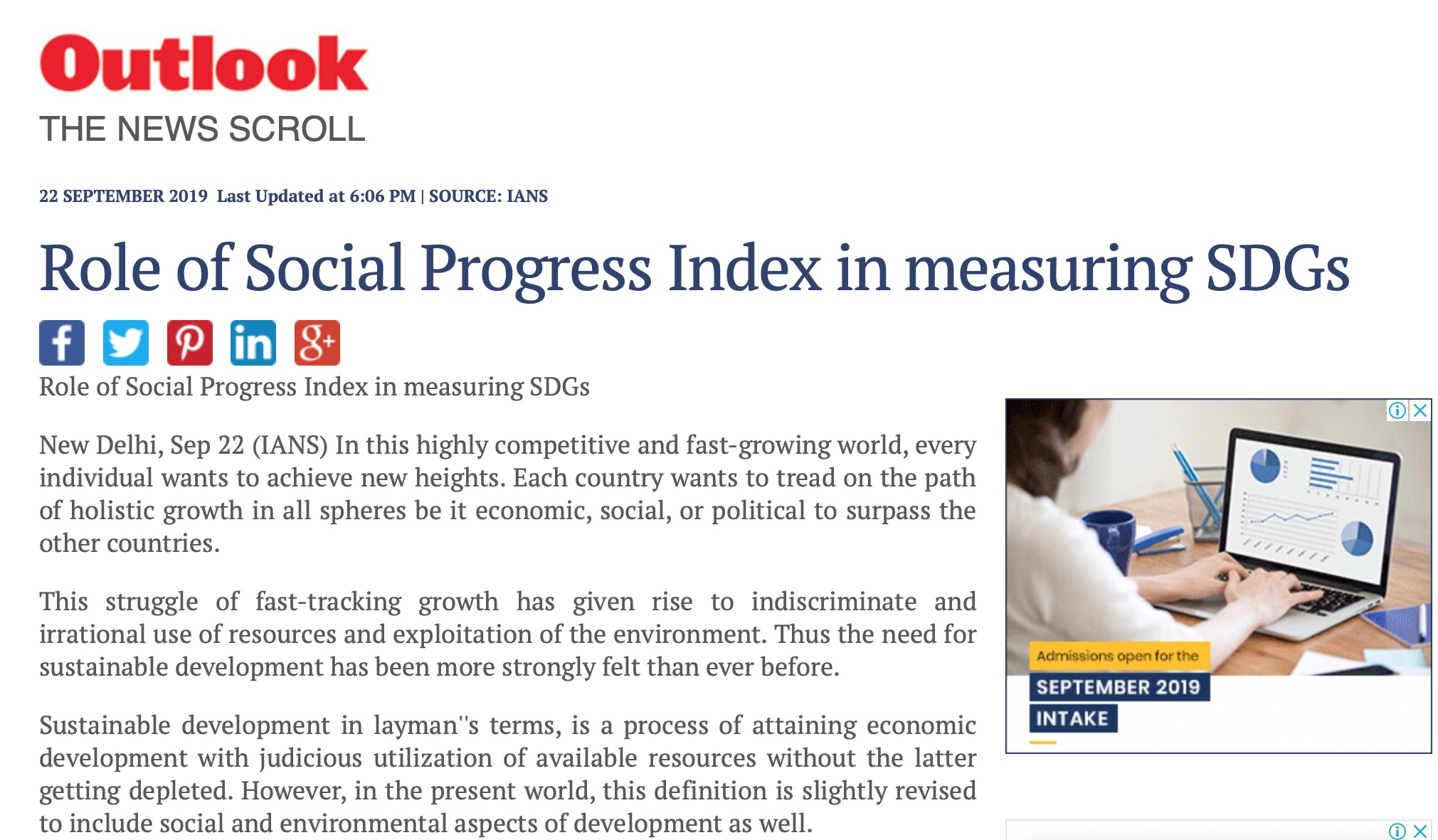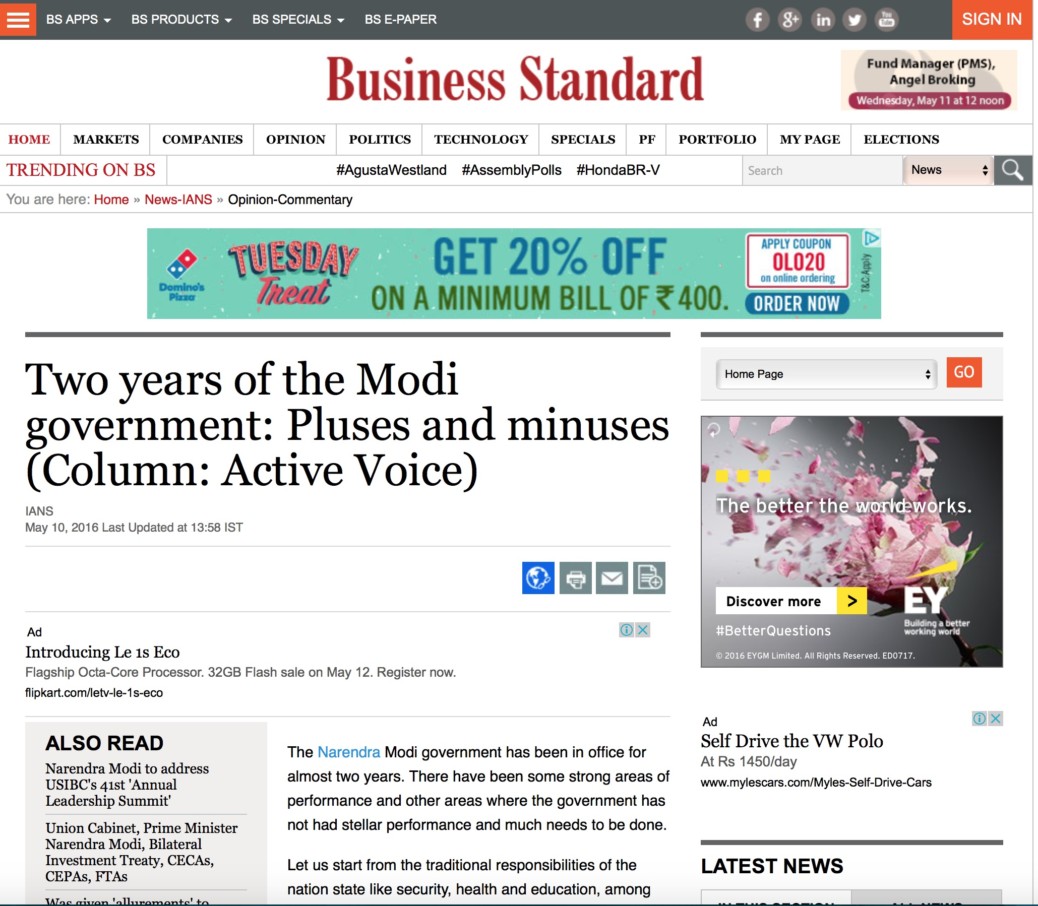India, Clusters and the Case for Uniform Growth
One of the major issues in policy has always been what drives a country’s growth. It sometimes happens that particular areas with booming economic activity tend to be the main drivers of this growth and development, resulting in a varied spatial economic landscape. The need for a more uniform spatial distribution of economic growth is rooted in a fairly simple argument – the more high-performing regions there are within the country, the more significant the economic growth will be. While the backing logic is unmissable, ensuring and achieving uniformity of growth and progress across the country remains a considerable challenge. Most definitely, this raises a clarion call for adopting new perspectives, especially in India’s case, for realising ways through which growth is not isolated, or progress propelled by only a minority of regions. According to the Competitiveness Roadmap for India@100, by Dr Amit Kapoor, Chair, Institute for Competitiveness, Professor Michael E. Porter, and Dr Christian Ketels of Harvard Business School, urban districts only make up about 30% of all districts in India, despite accounting for more than 55% of all wages paid there and close to 45% of all jobs. Similarly, Maharashtra and Gujarat, two states, account for close to half of all exports. States also vary on a number of other factors, including capital generation and innovation. The necessity of achieving a more uniform spatial development in the nation has been widely discussed. However, the need of the hour for India is a new strategy for comprehending what propels growth in distinct areas.
As per the competitiveness roadmap, “clusters” becomes the means to enhance the country’s competitiveness. The variations in cluster portfolio and locational advantages are related to variances in regional economic performance across India. Understanding clusters is necessary to achieve equality in the spatial distribution of economic growth. In essence, clusters are collections of connected and supporting industries in proximity to one another. An oft-cited definition of clusters by Prof. Michael Porter defines them as “geographic agglomerations of companies, suppliers, service providers, and associated institutions in a particular field, linked by externalities and complementarities of various types”. As related businesses and organisations make up clusters, they stand out from simple agglomerations of economic activity. Traded Clusters and Local Clusters are the two types of clusters that operate in regional economies. The division is based on operational competitive dynamics within each type of cluster and patterns of geographic presence. Traded clusters, such as the IT industry in Bengaluru, the video production and distribution industry in Mumbai, and the financial services industry in New York City, are thought to be the driving forces behind regional prosperity. Local clusters, on the other hand, are dispersed throughout the country, mirroring the spread of general economic activity and serving the demands of regional markets. While regional clusters tend to be centres for innovation and better incomes, local clusters typically offer employment at the local level. When both types of clusters operate effectively, a region becomes more competitive.
Clusters have long been used to shed light on a country’s economic topography. India has the chance to figure out how to create uniformity, given the presence of clusters all throughout the country. According to the Competitiveness Roadmap, a significant portion of Indian districts have not yet developed strong clusters, but a small number of districts are home to numerous strong clusters. The report also observes that strong clusters account for a larger portion of the payroll in areas with higher average wages. Furthermore, high-skill concentration is linked to areas with higher average earnings. In comparison to the rest of the economy, Indian trading clusters are characterised by a higher pay level, higher capital intensity, and higher skill intensity. Indian trading clusters are distinguished from the rest of the economy by a higher wage level, higher capital intensity, and higher skill intensity. The need to focus efforts on creating sturdy clusters becomes clear from this. To be able to do this, it is critical to first analyse the clustering pattern of the existing data and determine the potential for creating new ones. A laudable attempt in this area is the cluster identification approach developed by the Cluster Mapping Project, a project of the Institute for Strategy and Competitiveness at the Harvard Business School. The project offers a database for cluster mapping of industry clusters and local business ecosystems in the US.
The foundation of a nation is its regional economy. India has to create a database of information on region-specific advantages that can be used to develop practical policies for various regions. This would greatly aid in creating a growth plan for particular areas, industries, and clusters. The presence of more clusters and the reinforcement of existing ones will propel the Indian economy toward its goals.
The article was published with Business World on February 11, 2023.























